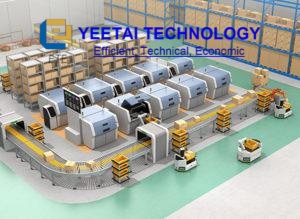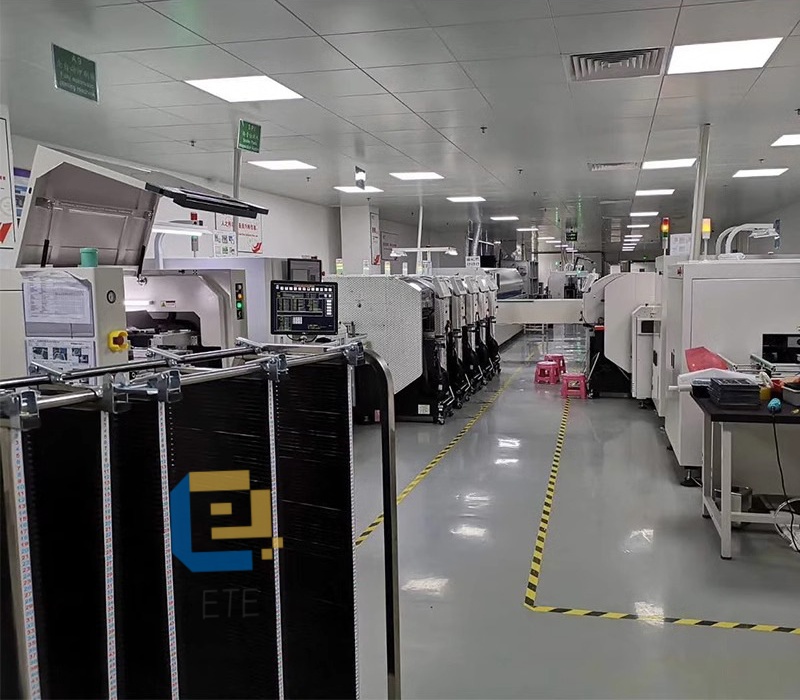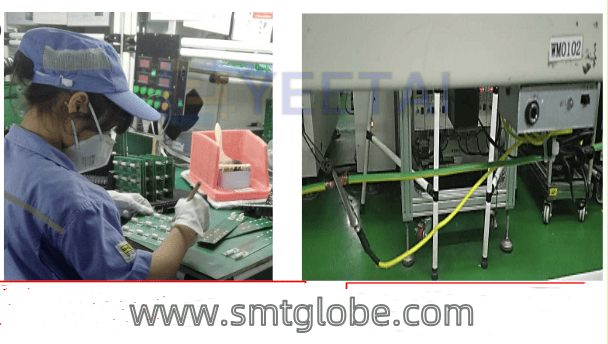What is an AGV?
AGV stands for Automated Guided Vehicle, which refers to a type of mobile robot equipped with automatic guiding devices such as electromagnetic or optical systems. These vehicles are designed to navigate along predefined routes, enabling them to perform transportation functions safely and efficiently. AGVs play a crucial role in modern manufacturing and logistics systems, particularly in the electronic manufacturing industry. SMT (Surface Mount Technology) factories can also use it.
Key Features of AGVs
- Automated Navigation: AGVs utilize various methods for path guidance, such as electromagnetic tracks that are adhered to the floor. This allows the vehicles to follow designated routes autonomously. Control systems can also dictate their movements, ensuring precise navigation within busy manufacturing environments.
- Wheeled Mobility: Unlike other robotic systems that may rely on walking or crawling, AGVs are characterized by their wheeled movement. This design enables them to operate quickly and efficiently, enhancing overall productivity. Their simple structure and strong controllability contribute to their effectiveness in transporting materials.
- Flexibility and Space Efficiency: One of the major advantages of AGVs is that they do not require fixed infrastructure like rail tracks or racks. Their ability to navigate without such constraints makes them incredibly versatile, capable of operating in a wide range of environments. This flexibility is essential in automated logistics systems where dynamic movement is crucial.
Advantages of Using AGVs in SMT Factories
- High Level of Automation: AGVs greatly reduce the need for manual labor in SMT factories. They can autonomously transport materials, minimizing human intervention and enhancing operational efficiency. This is particularly beneficial in environments where speed and accuracy are vital.
- Automated Charging: Most AGVs come equipped with self-charging capabilities. When a vehicle’s battery is running low, it can find its way to a charging station autonomously. This feature ensures continuous operation without significant downtime.
- Enhanced Aesthetic and Corporate Image: The modern design of AGVs can significantly improve the visual appeal of the production environment. A well-organized workspace with advanced technology not only boosts employee morale but also enhances the company’s reputation in the industry.
- Space-Saving Design: AGVs are compact and can traverse tight spaces, making them ideal for busy production floors. Their ability to move freely between different sections of the factory reduces the need for extensive real estate, optimizing space utilization.
- Increased Safety: AGVs are equipped with advanced safety features, including obstacle detection and emergency stop capabilities. This ensures safe operation in proximity to human workers, reducing the risk of accidents and enhancing the overall safety of the workplace.
Applications in Wave Soldering Processes
In SMT factories, AGVs can be particularly beneficial in the transportation of wave soldering pallets. These pallets are vital for the wave soldering process, which is crucial for assembling electronic components. By employing AGVs for this task, factories can enjoy:
- Automated Transportation: AGVs can efficiently move wave soldering pallets from one workstation to another, eliminating the need for manual handling.
- Reduced Labor Costs: Automating the movement of pallets allows human workers to focus on more critical tasks, thus optimizing workforce allocation and reducing labor costs.
- Improved Workflow: With AGVs managing the transport of materials, production timelines can be streamlined, leading to enhanced delivery rates and increased productivity.
Conclusion
The implementation of AGVs in SMT factories represents a significant advancement in automated manufacturing practices. Their concepts and features—ranging from high levels of automation and space-saving designs to improved safety—make them an invaluable asset for electronic manufacturing operations. By utilizing AGVs for tasks like transporting wave soldering pallets, SMT factories can enhance efficiency, reduce costs, and create a safer, more organized work environment.
Investing in AGV technology not only transforms current manufacturing processes but also positions companies for future growth and competitiveness in the evolving electronic manufacturing landscape.
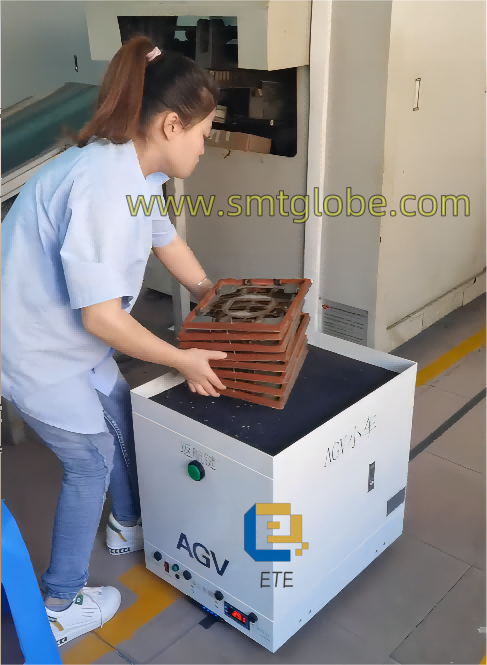
Conclusion
In the context of SMT factories, the advantages of AGVs are clear. They provide high levels of automation, efficient charging capabilities, aesthetic improvements, space efficiency, and enhanced safety. By implementing AGVs for the transport of wave soldering pallets, SMT manufacturers can optimize their operations, reduce labor costs, and improve overall productivity.
Investing in AGV technology not only streamlines material handling processes but also positions SMT factories for future growth and innovation. As the industry continues to evolve, AGVs will play a crucial role in maintaining competitive advantages in the electronic manufacturing landscape. By adopting AGVs, SMT factories can ensure that they remain at the forefront of efficiency and effectiveness in their operations.
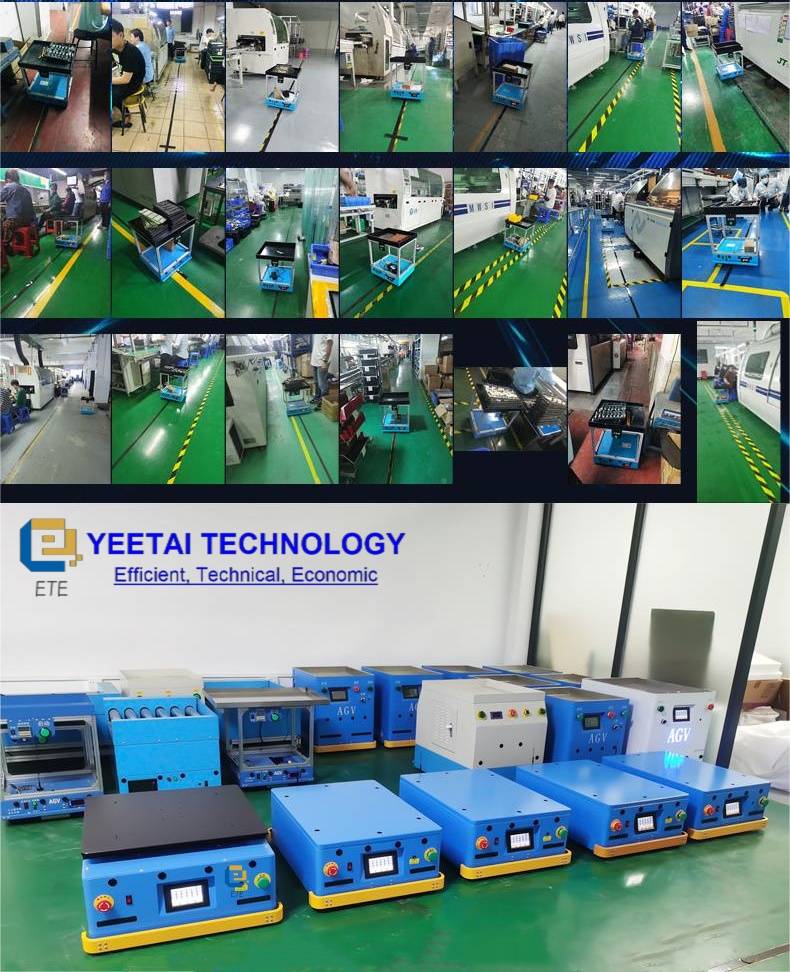
If you need any solutions, we are here to help.
Laser-guided SMT AGV Robot ETE-AGV-910A
SMT AGV Equipment for moving wave soldering pallet | ETE-AGV30-C
SMT Automatic Guided Vehicle ETE-AGV100-T
AGV for PCB moving | ETE-AGV100-L
Wave Soldering Pallet AGV | ETE-AGV60
